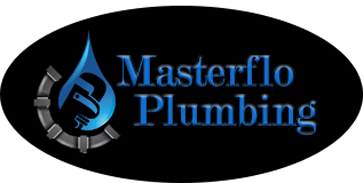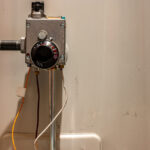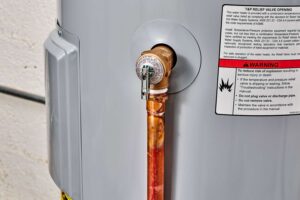
Hidden plumbing leaks represent a significant challenge in home maintenance, often going unnoticed until they cause considerable damage. At Masterflo Plumbing, we understand the complexities of these hidden threats. Our pipes, concealed behind walls, under floors, and above ceilings, form a complex network that is not only difficult to access but also tricky to examine without the right tools and skills. This intricacy often means leaks remain undetected, leading to costly repairs. With over two decades of experience, Masterflo Plumbing is equipped with the expertise and advanced technology required to identify and fix these hidden leaks efficiently, safeguarding your home against potential damage. Here’s an in-depth look at why these leaks are elusive and how we tackle the challenges they present.
Key Takeaways
- Complex network of pipes requires specialized equipment and expertise.
- Minimal visible signs make detection difficult.
- Slow leak progression leads to extensive damage.
- Concealed locations like behind walls necessitate regular inspections.
- Interference with building materials complicates leak detection.
Complex Network of Pipes
Moving through the complex maze of pipes in your home can be a challenging task when trying to find hidden plumbing leaks. With pipes running behind walls, under floors, and through ceilings, locating the source of a leak can feel like finding a needle in a haystack. The intricate network of plumbing in your house creates obstacles that make leak detection a formidable challenge.
One of the main difficulties in dealing with hidden plumbing leaks is the sheer vastness of the piping system. The labyrinthine layout of pipes can make it hard to pinpoint the exact location of a leak, especially when it’s concealed behind layers of building materials. This complexity often requires specialized equipment and expertise to navigate effectively.
Additionally, the interconnected nature of plumbing systems means that a leak detected in one area could be originating from a completely different part of the house. This interdependence further complicates the process of identifying and repairing hidden leaks.
Minimal Visible Signs
Traversing the intricate network of pipes in your home can be further complicated by the minimal visible signs that often accompany hidden plumbing leaks. When trying to locate these elusive leaks, you may encounter the following challenges:
- Low Water Pressure: A sudden drop in water pressure could indicate a hidden leak affecting the flow of water through your pipes.
- Mold or Mildew: The presence of mold or mildew in unexpected areas of your home, like behind walls or under flooring, may signal a hidden plumbing leak.
- Stained or Warped Walls: Discoloration, bubbling, or warping of walls can be a result of water seeping through from a concealed pipe leak.
- Musty Odors: Unpleasant musty smells, particularly in areas with no apparent water source, could be a sign of hidden water damage caused by a leak.
These minimal visible signs can often be the only indicators of a hidden plumbing leak, making detection and repair a challenging task for homeowners.
Slow Leak Progression
As hidden plumbing leaks persist undetected, their slow progression can lead to extensive water damage within your home. These leaks may start small, with just a few drops here and there, but over time, they can cause significant structural damage. The slow drip of water can weaken walls, floors, and ceilings, potentially leading to mold growth and compromising the integrity of your home.
One of the challenges with slow leak progression is that it often goes unnoticed until the damage is already severe. Unlike sudden bursts or leaks that are immediately visible, slow leaks can quietly wreak havoc behind walls or under floors. By the time signs like water stains, musty odors, or peeling paint become apparent, the damage may already be extensive.
To prevent the consequences of slow leak progression, it’s vital to regularly inspect your plumbing system for any signs of moisture or water damage. Being proactive in identifying and fixing these slow leaks can save you from costly repairs and extensive restoration work down the line.
Concealed Locations
Exploring the hidden plumbing leaks challenge, concealed locations within your home can serve as vital breeding grounds for potential water damage. These hidden spots can make it difficult to detect leaks early, leading to more extensive and costly repairs down the line. To navigate the maze of concealed areas where leaks may lurk, consider the following:
- Behind Walls: Plumbing pipes running behind walls are often out of sight, making it challenging to spot leaks until they cause visible damage such as stains or mold growth.
- Under Floors: Leaks beneath flooring materials like tiles or hardwood can go unnoticed for extended periods, causing structural damage and potential health hazards.
- Ceiling Spaces: Water leaks in the ceiling voids can drip down from above, masking the source and making it tricky to pinpoint the origin without professional assistance.
- Cabinets and Vanities: The plumbing beneath sinks and vanities is prone to leaks, which can go unnoticed until significant damage occurs to the surrounding areas. Regular inspections are essential in these concealed locations to catch leaks early and prevent extensive damage.
Interference With Building Materials
Exploring the maze of hidden areas where plumbing leaks may hide, maneuvering through building materials can complicate leak detection and repair processes. When leaks occur within walls, ceilings, or floors, various building materials such as drywall, insulation, and concrete can obstruct the view and access to the source of the leak. These materials not only conceal the plumbing system but also absorb and retain water, making it harder to pinpoint the exact location of the leak.
Additionally, building materials like wood and drywall can warp or rot when exposed to prolonged moisture, further complicating the situation by potentially masking the original source of the leak. The challenge lies in working through these materials without causing unnecessary damage to the structure, which can lead to costly repairs. Specialized equipment and techniques, such as thermal imaging and moisture meters, are often required to overcome these obstacles and accurately detect hidden plumbing leaks behind building materials. By understanding how interference with building materials affects leak detection, plumbing professionals can efficiently address these challenges and prevent further damage to the property.
High Water Pressure
Dealing with high water pressure can pose a significant challenge when detecting and repairing hidden plumbing leaks in a property. High water pressure can exacerbate leaks, causing more water to escape and potentially leading to more severe damage. Here are some reasons why high water pressure complicates the process of finding and fixing hidden plumbing leaks:
- Increased stress on pipes: High water pressure puts excessive strain on the plumbing system, making it more susceptible to leaks and failures.
- Difficulty in pinpointing leaks: The force of the water can make it harder to identify the exact location of the leak, especially if it is concealed behind walls or underground.
- Risk of further damage: With high water pressure, leaks can worsen rapidly, resulting in extensive water damage to the property if not addressed promptly.
- Impact on water bills: High water pressure can lead to wastage through leaks, causing an increase in water bills and unnecessary expenses.
Managing and regulating water pressure is essential in preventing and addressing hidden plumbing leaks effectively.
Underground Pipework
Exploring the intricacies of concealed plumbing leaks, especially in properties with elevated water pressure, can result in additional challenges when it comes to resolving issues with underground pipework. Underground pipework poses a unique set of difficulties due to its location beneath the surface. When a leak occurs in these underground pipes, pinpointing the exact location can be a challenging task. Unlike visible pipes, underground pipework requires specialized equipment such as leak detection technology and cameras to identify the source of the problem accurately.
Moreover, the soil surrounding underground pipework can also complicate leak detection efforts. Different soil types, such as clay or sandy soil, can impact how water travels and behaves, making it harder to trace the leak back to its origin. Additionally, factors like tree roots or shifting ground can further obscure the location of the leak, prolonging the detection process.
Given these challenges, addressing hidden plumbing leaks in underground pipework demands patience, expertise, and the right tools to effectively diagnose and repair the issue before it escalates into a larger problem.
Evaporation and Absorption
When hidden plumbing leaks occur, understanding how evaporation and absorption impact the situation is essential for effective detection and resolution. Here’s how these factors play a critical role:
- Evaporation: Water from leaks can evaporate quickly, especially in warm or dry conditions, making it challenging to pinpoint the source. Keep an eye out for unexplained increases in water bills or musty odors.
- Absorption: Building materials like drywall or wood can absorb water from leaks, leading to structural damage over time. Check for discolored patches on walls or ceilings as potential signs of absorbed water.
- Moisture Detection Tools: Utilize moisture meters to detect hidden water within walls or floors, helping identify the extent of the leak and prevent further damage.
- Professional Inspection: If you suspect a hidden plumbing leak but can’t locate it, consider hiring a professional plumber with specialized equipment like thermal imaging cameras to accurately pinpoint the issue.
Sound Masking by Background Noise
To effectively address hidden plumbing leaks, consider how sound masking by background noise can impact the detection process. When trying to locate a hidden plumbing leak, background noise can present a significant challenge. The presence of constant sounds like running appliances, traffic outside, or even music playing in the background can mask the subtle sound of water escaping from a pipe. These ambient noises make it harder to pinpoint the exact location of the leak by listening for the sound of dripping or running water.
In some cases, utilizing sound masking techniques can help overcome this obstacle. By deliberately introducing controlled background noise, such as white noise generators or sound masking devices, you can drown out distracting sounds and isolate the plumbing system’s sounds. This focused approach enhances your ability to detect the subtle sounds associated with a hidden leak. By reducing the interference of background noise, you can improve your chances of identifying the leak’s location accurately and efficiently.
Conclusion
Masterflo Plumbing is North Georgia’s most trusted plumbing company. With over 20 years of experience and staffed with master plumbers, our team is equipped and ready to serve your plumbing needs. Whether you need water heater repair or replacement, or help with minor and major plumbing issues, you can count on Masterflo Plumbing for reliable service throughout Cherokee County and metro Atlanta.


